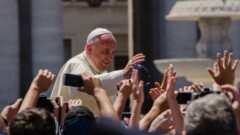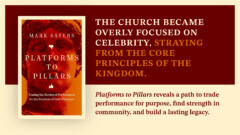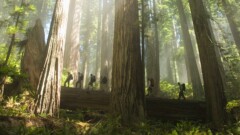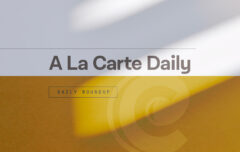Someone posted some fascinating comment here earlier today. It contained all sorts of information about the 2004 National Pastors Convention which took place in two locations earlier this year. The convention is “designed to offer church pastors, their spouses and staffs the opportunity to find personal renewal and refreshment along with professional enrichment. The EC is an opportunity for those interested in the emerging church discussion the chance to connect with one another while exploring how the Church can best respond to a postmodern culture.”
Speakers at the convention included Rick Warren, Brennan Manning, Brian McLaren and other well-known Christian authors and pastors. You can view a schedule for the event here. Note that every day begins with Labyrinth. You can read about this ancient but dangerous mystical nonsense here.
Labyrinth is an interactive installation for spiritual journeys. It’s for anyone who wants a break from surfing the surface of culture to contemplate the deeper things of life.
Labyrinth reshapes a 12th-century ritual for the 21st century. Its maze-like path takes you on a symbolic journey, creates space to unwind and think – in particular about our relationships with ourselves, one another, our planet and God.
Designed for young and old alike, it provides a mixture of rituals and visuals, of contemplative words and contemporary ambient music, of symbols and media to help guide the spiritual traveller.
Labyrinths were a feature of many medieval cathedrals – one of the best remaining examples is found in Chartres Cathedral in northern France. Unlike a maze they have only one path – there are no dead ends. People walk the labyrinth slowly, as an aid to contemplative prayer and reflection, as a spiritual exercise, or as a form of pilgrimage.
This contemporary version includes music, meditations, art, media and symbolic activities at intervals along the path. Participants walk the Labyrinth with a CD player and headphones, in their own relaxing soundworld, at their own pace. Each track on the CD contains meditations, instructions and music relating to a part of the labyrinth.
I read with great interest Dan Kimball’s experience in The Labyrinth.
Coming in from the brilliant San Diego sunshine, my wife and I entered a darkened hall lit only by candles and a dimmed chandelier. The room was silent. As our eyes adjusted, we saw several people kneeled in prayer. The setting, spirit, and solemn stillness of the hall told us that we had found something meditative there, something spiritual.
Today’s evangelicals are accustomed to well-choreographed worship services with every minute carefully filled with music, video, and preaching. Postmodern generations are hungering for something more—an unhurried, mystery-filled, meditative experience that doesn’t have to fit into a preplanned time schedule. The prayer labyrinth offers a feast to fill that hunger.
Meeting God in the middle
The labyrinth is a maze-like path similar to those designed into the floors of European cathedrals during the Middle Ages. Christians of that time would walk the labyrinth to aid their contemplative prayer and reflection. The labyrinths fell into disuse, and most were eventually forgotten or destroyed.
At the National Pastors Conference in San Diego, however, we found the labyrinth was back and given an update. The path was formed by black lines on a 35-foot square piece of canvas laid on the floor. We each were given a CD player with headphones to guide our journey through the 11 stations on the path. As we began the inward journey—toward the center of the canvas—a gentle female voice with a British accent read a portion of John 1. She told us not to rush through the labyrinth, but to slow down, breathe deeply, and fully focus on God.
At the first stop, we looked at a television screen covered with complex, moving electronic wave forms. We were instructed to pray about and eliminate the noise within that interferes with God’s voice. At another station we dropped small stones into water, each stone representing a worry we were giving over to God. Later we drew on paper symbols of our hurts, prayed about each of them, and put them in a trash can.
After thirty minutes we found ourselves at the labyrinth’s center, where, seated on cushions, we were offered the elements of Communion. The narrator read more Scripture and reminded us how near Jesus Christ is to us. There was a Bible if we desired to linger, reading and praying.
The journey outward focused on how we can be used by God in other people’s lives. At one station we made impressions of our hands and feet in a box of sand, reminding us that we leave impressions on the people we touch. My wife and I spent an hour in the labyrinth and found ourselves calmed and refreshed, our perspective uniquely restored.
We made our own prayer path
After the convention we knew we couldn’t keep this experience to ourselves. A few months later we featured a labyrinth as part of Graceland’s annual art event at Santa Cruz Bible Church.
Graceland artists recreated the labyrinth with a kit we purchased (The Prayer Path, Group Publishing), transforming one of the church’s multipurpose rooms into a medieval prayer sanctuary. The team hung art on the walls, draped fabric, and lit candles all around the room to create a visual sense of sacred space. Over two nights we saw more than 100 people go through the labyrinth. It was a joy to see so many people on their knees communing with God through the experiential prayer elements.
Meditative prayer like that we experienced in the labyrinth resonates with hearts of emerging generations. If we had the room, we would set up a permanent labyrinth to promote deeper prayer. Until then, however, Graceland will continue to incorporate experiential prayer and encourage our people to stop, quiet themselves, and pray.
Dan Kimball pastors Graceland, the ministry and worship services for the emerging culture at Santa Cruz Bible Church in Santa Cruz, California.
Copyright © 2001 by the author or Christianity Today, Inc./Leadership journal. Fall 2001, Vol. 23, No. 4, Page 38.
“The team hung art on the walls, draped fabric, and lit candles all around the room to create a visual sense of sacred space.” What!? Where does the Bible say that a space surrounded by fabric and candles is the way to create a sacred space? They are merely pandering to the medieval false notions of what constituted a holy space! This are the very things the Reformation freed us from!
The convention also offered yoga on a daily basis as part of their Sustainable Life Forum. I don’t think that I even need to comment on that!
What can I say? These are the leaders of the Evangelical world and yet they are involved in what is little more than the mysticism I thought we had left behind. As the French say “Plus ca change, plus ce la meme chose.” (The more things change, the more they stay the same).









